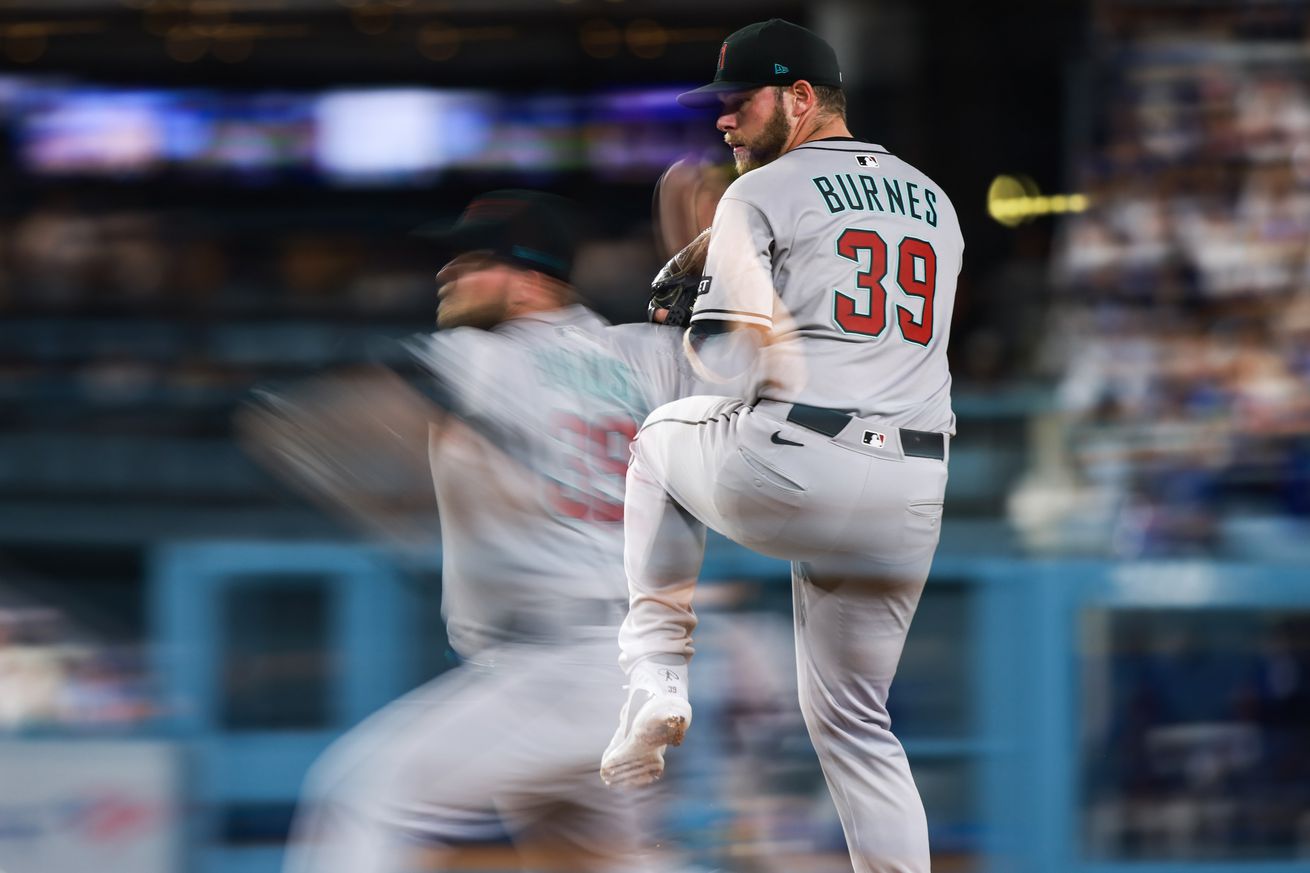
What’s been working for Corbin Burnes and can he keep it up?
Introduction
By far one of the most surprising in the Diamondbacks’ offseason was the signing of Corbin Burnes. It took much of the industry by surprise as well as nearly every outlet I saw linked Burnes with one of the big market teams like the Mets or Yankees or staying with the Orioles. Seemingly everyone missed the fact that Burnes’ family was based in Arizona and that he might take less money for more time with his wife and children. Unsurprisingly, D-Backs fans were over the moon about the signing – especially since it kept him away from intraleague rivals like the Dodgers or Padres. I myself immediately started thinking about possible article topics like where the Burnes-Gallen combination fit into Arizona pitching duo history or how dominant the D-Backs’ rotation was going to be. Instead, I and the rest of the fandom was treated to an uneven introduction to Burnes’ tenure in the desert as his first three starts featured a dip in velocity and strikeouts with an increase in walks and homers – an unfortunate combination. But over the last few weeks, he has truly rounded into form, including yet another excellent outing in Chavez Ravine last night that included Burnes extending his scoreless streak to 21 innings, even if he did take the hard luck loss. So what’s behind the change and what can he do to make sure it continues for the rest of the season?
First, it might be worthwhile to take a step back and review what “kind” of pitcher Burnes has been in his career. Outside of his Cy Young season back in 2021, he’s never been a big strikeout pitcher, preferring to generate outs with grounders than flyouts. I’ve always been partial to that pitcher profile as it tends to age better than flyball pitchers or ones that depend on power to strikeout batters. For Burnes though, the biggest developmental choice was refining and then increasing the usage of his cut fastball or cutter from 2019-2021. It’s a nasty pitch that sets up his curveball and changeup, especially when he’s able to deliver it with pace, which hasn’t always been the case this season. Last year, his cutter was one of the most valuable pitches in the entire major leagues. If he can return to that form, he truly will become the force that Mike Hazen expected when he inked him this past offseason.
Positives
Predictably given the level of usage Burnes has for his cutter, when it’s not landing, he’s likely to struggle. In his first three starts, his cutter was completely ineffective. He had more walks than strikeouts with it, he gave up a couple homers on it, and allowed eight total hits with the pitch. Even worse, the velocity on the cutter was slightly down. That combined ineffectiveness meant that any of his secondary pitches were even more vulnerable. But since that third start, it’s been much more effective, including a .196 BAA compared to .286 in the first three starts. That increased effectiveness opens up his entire pitching arsenal to find ways to strike batters out – especially his curveball. As evidenced by the absolute dominance he displayed last night against the Dodgers, when Burnes has a good feel for his curveball, it can be an absolute weapon against batters. Of his eight strikeouts last night, seven of them came on the curveball. The other one? It came on his cutter.
Negatives
It’s not all roses unfortunately. Even with the improved performance over the past six starts, he is struggling to keep batters off the basepaths – especially via walks. Burnes has nearly doubled his walks per nine from last year (2.2 versus 3.9) and has still been walking far too many batters in this stretch of excellence with a 3.38 BB/9 over the last six starts. That struggle in turn means that Burnes is flirting with scoring opportunities much more often than he has in the past. I suspect that’s one of the reasons some of the expected stats for this season are so much higher than his actual stats – including a 4.05 FIP compared to his ERA of 2.73 on the season. The way that FIP is calculated automatically means that he will be further punished for walking batters and failing to strike them out more than he is in finding ways to produce outs overall.
So far, it’s been an uneven start to his first year with the Serpientes. I obviously appreciate the uptick in performance, but there are warning signs on plenty of underlying stats that make it difficult to believe that this level is truly sustainable for the entire season. He has to stop walking so many batters. I know that’s incredibly obvious advice, but unless he does, it will automatically shorten his outings and give the opposing team that many more opportunities to score.